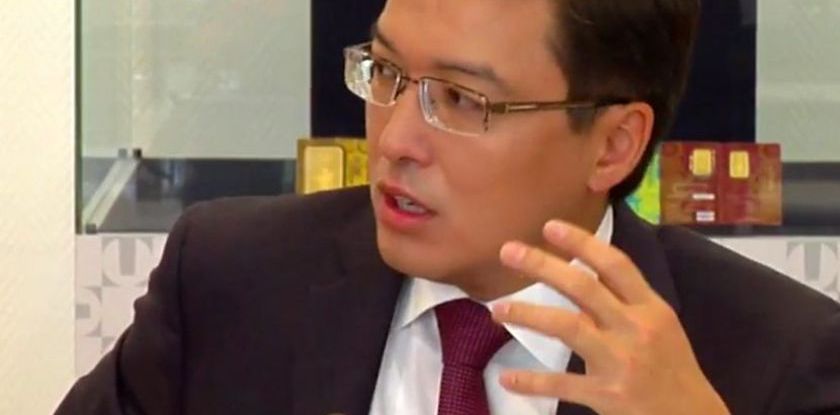In one of our recent articles, we predict that the National Bank of Kazakhstan’s attempts to solve the problems of Kazakhstan banks, among other things, by establishing manual control of the banking sector under the authoritarian rule will inevitably lead to voluntarism in the regulator’s policies and practices.
Unfortunately, today, this development has become inescapable. The NBK Chairman Daniyar Akishev has received carte blanche from Nursultan Nazarbayev. The president gave it not only because he believed in Daniyar Akishev’s talents and abilities but also because he had no other course of action to pursue except to try, by the means of the personal factor, to cover the sector’s systemic deficiencies and errors. Therefore, we believe it makes sense to try and predict how things in the banking sector are going to develop over the next two years.
Why two and not three or more?
First, as history tells us, the period of Nazarbayev’s show of an increased trust to one or another “ally” usually does not last more than two years. Then, the ally loses the president’s favour and the “alienation” process begins.
Second, in Kazakhstan, the consolidating processes among the ruling elite against the “upstarts” (we do not use this term derogatory but as a characterization of an official who suddenly becomes the president’s highly trusted favourite) usually take no more than a year. Then, the hidden resistance of the state apparatus and the “upstart’s” own department to his actions becomes wide-sweeping.
Third, according to our estimates, the transition period during which the power will move from Nazarbayev to his successor will take no longer than two years. And this is regardless of how long the current president will live since worsening of the living conditions of most Kazakhstanis that Akorda is incapable of preventing will force the ruling elite to do anything to steer clear from a revolutionary situation.
In our opinion, for the next two years, the National Bank’s board of directors, regardless of who is in charge, is fated to revive, reform, and qualitatively improve the Kazakhstan banking system. But where will these admirable intentions lead?
First, let us go back to the NBK Vice-Chairman Oleg Smolyakov’s resonant interview to the Kursiv newspaper in which he underlined the “problematic zones of Kazakhstan’s banking system). (Read our comments on the interview in Where will National bank’s ideas lead)
Here are some quotes from the interview (bolding is ours – Kazakhstan 2.0):
“There are several of them and we have been talking about them for a long time. First, we believe that commercial banks’ problem loans portfolio is higher than the official statistics shows. The matter is that Kazakhstan financiers very often use restructuring as a means to prolong the life of the borrower and the loan. At that, there is no guarantee that the borrower will eventually be able to pay off the debt. The next thing is liquidity management. Unfortunately, in our country, the liquidity is ensured by a vast number of quasi-state companies. These are different enterprises but, indirectly, they are all linked to the parent company and have similar investment strategies. If it is a large bank with a good base, then, no problem, but if it is a medium or a small-size bank, every large outflow of the capital will put a pressure on its liquidity”.
It is well-known how the National Bank of Kazakhstan is going to solve these problems. Its plans and intentions have been announced by the chairman and his subordinates many times, therefore, we will not repeat them. Instead, we will forecast what the results of their attempts will look like by the end of 2019.
- Writing off the problem loans of Kazakhstan banks to decrease their share from 25% (earlier, this figure was announced by Olzhas Kizatov, the head of the Banking Sector Supervision Department) to 10% and less will lead to a significant reduction of credit financing of the economy.
- The monetary funds of the quasi-state companies as well as those of the private sector will flow to the country’s largest banks (first of all, Halyk Bank) since the latter are less likely to go bankrupt that the rest of the financial institutions. Therefore, it is these banks that will receive the state’s support if the need arises.
- Since the big enterprises involved in the raw material extracting and exporting will continue to borrow money from abroad and the private consumption will stagnate, the income growth of the banking sector is to be minimal. Therefore, recovering and revitalizing the market becomes unlikely and, if it does happen, it will be not so much owing to the profit growth and capitalization as to the exiting of the weak “players”. The NBK policies and practices of toughening the regulatory rules and procedures will help, too.
- The National Bank will continue the current policy of withdrawing cash liquidity from the market since abandoning it is fraught with redirecting the players towards the foreign currency market and yet another national currency devaluation. The only thing that the National Bank may try to do is to decrease the value of money to reduce its operational expenses.
- The National Bank’s attempt to force Kazakhstan banks to use the free monetary funds to increase credit financing of the economy and population will be ineffective due to the fact that the economic crisis is continuing, the Kazakhstan producers and products are to remain uncompetitive even domestically and, therefore, the effective demand for credit products will remain low. Besides, a new national currency devaluation is also possible as a result of the dollar strengthening due to the changes in the FRS policies.
- The process of the bank capital concentration in the country will accelerate, the number of banks in Kazakhstan will constantly be diminishing as a result of bankruptcies and mergers. At that, the dominant position of Halyk Bank will only strengthen since its share of the sector may increase to almost 50%.




